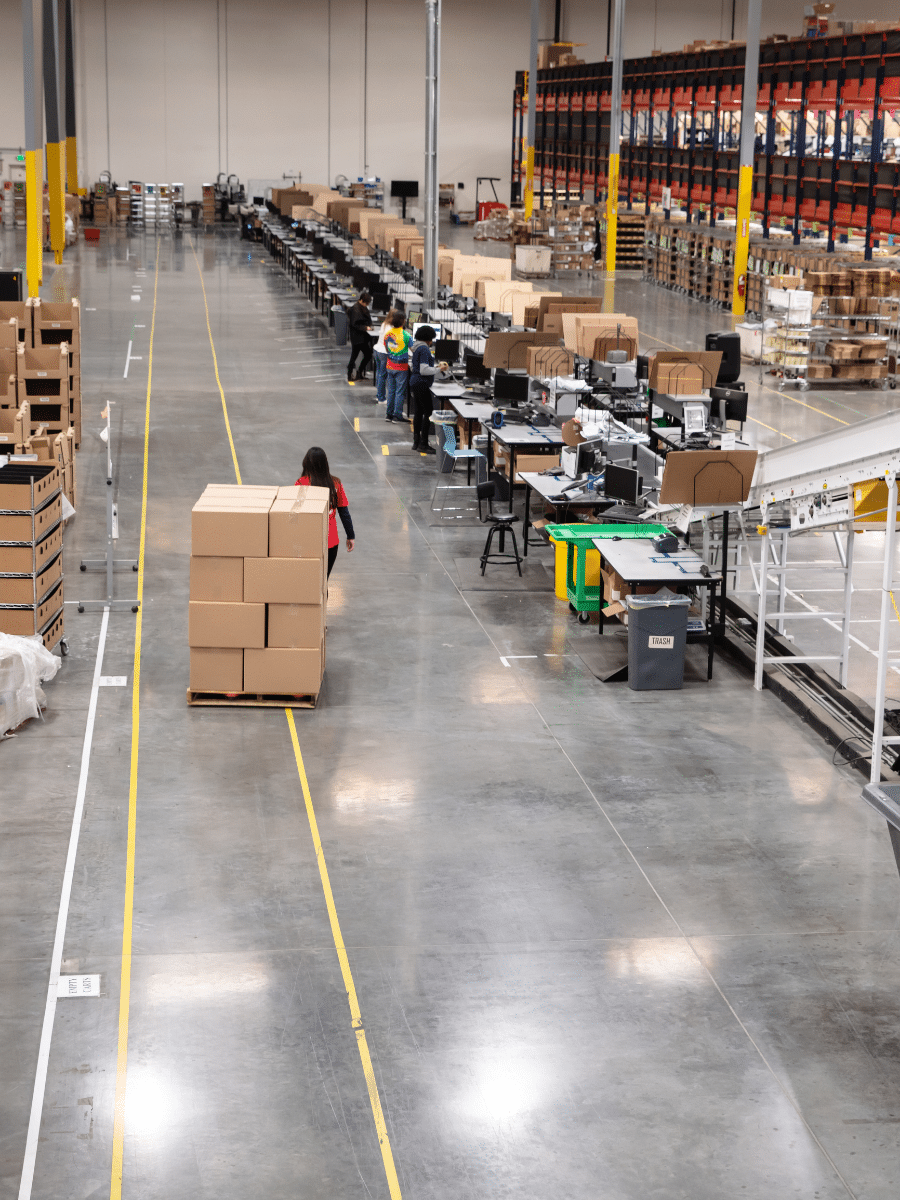Navigating the Maze of Margins and Mastery: A Journey from Historical Warehouses to Modern Marvels
Warehouses have long been the heart of commerce, acting as the pivotal junction between production and the consumer. But if we trace back to their origins, the warehouses of yesteryears were vastly different from the technological marvels we see today. They were rudimentary structures, mainly serving as storage units, devoid of the complex inventory systems or sophisticated layouts we’ve grown accustomed to.
However, as commerce evolved, so did the challenges. The simple paths of the early warehouse slowly transformed into the intricate mazes of modern operations. No longer was it just about storing; it was about storing smartly. And with the global economy adding its twists and turns, the challenge intensified: How does one optimise every square foot for efficiency without inflating costs?
Today, we stand at the crossroads where innovation meets tradition. Warehouses have not only grown in size but also in intelligence. The key to this evolution lies in the delicate dance of balancing costs with operational efficacy. Much like navigating a complex maze, mastering this balance requires vision, strategy, and sometimes, a touch of genius.
So, as we dive deeper into this labyrinth of warehouse operations, let’s journey together through its winding paths, uncovering the strategies that illuminate the way, ensuring that each step is purposeful, profitable, and proficient.
Shall we take the first step?
1. Mastering the Blueprint: Optimised Warehouse Layout
In ancient times, city planners would spend decades, if not lifetimes, designing urban blueprints to optimise flow, commerce, and defence. The same principles apply to modern warehouses. An optimised layout isn’t just about fitting everything inside; it’s about streamlining operations in a way that feels almost choreographed. It’s the difference between a bustling market square with clear paths and a crowded bazaar where stalls jut out unpredictably.
By effectively using vertical space, creating clear pathways, and ensuring goods are placed strategically based on demand patterns, warehouses can significantly enhance efficiency. An astute plan minimises movement, reduces handling costs, and paves the way for fluidity in operations.
2. Predicting the Next Turn: Efficient Inventory Management
Navigating a maze becomes infinitely easier when you can anticipate the next turn. Similarly, in the warehousing world, the power of prediction can’t be understated. Through tools like demand forecasting and just-in-time inventory systems, warehouses can almost “see into the future”. This means holding just the right amount of stock, reducing holding costs, and minimising wastage from expired or obsolete items. It’s akin to a sailor understanding the tides – by foreseeing the market’s ebbs and flows, warehouse managers can ride the wave of demand without capsizing under excess stock.
3. The Right Guides: Effective Labour Management
If the warehouse is a maze, then its workers are the seasoned guides, knowing every nook and cranny. How well they’re managed directly influences how efficiently the warehouse operates. Effective labour management is about more than just scheduling; it’s about understanding individual strengths, ongoing training, and fostering a culture of continuous improvement. Just like a seasoned tour guide can bring a historic site to life, a well- trained, motivated warehouse worker can elevate even mundane tasks into an art form, driving both efficiency and cost savings.
4. Tech Tools: The Drone’s View of the Maze
In our modern era, imagine having a drone that can give you a bird’s eye view of a maze, making the path clear. The technological tools available to warehouses today, from advanced WMS systems to robotics, offer a similar advantage. RFID tags, IoT devices, and AI-driven analytics platforms provide real-time data, turning vast warehouses into transparent operations where every item, no matter how small, can be pinpointed with accuracy. It’s no longer just about navigating the maze, but mastering it.
5. Sustainability: The Maze for Tomorrow
While the focus of warehouses has traditionally been on the here and now, the sustainable warehousing movement is making operators think of tomorrow. The question isn’t just how to navigate the maze efficiently but to ensure the maze itself is sustainable for future generations. From green energy solutions and sustainable packaging to waste reduction strategies, warehouses are becoming eco-friendly powerhouses. In this new eco-era, efficiency isn’t just measured in terms of time and money saved, but also in carbon footprints reduced.
As we move further into the 21st century, the warehousing industry stands on the precipice of monumental change. Automated robotics, AI-driven predictive analytics, and even the utilisation of augmented reality for inventory management are no longer the stuff of science fiction, but a tangible reality. These developments, while promising unmatched efficiency, also bring along substantial costs.
Warehouses of the future will likely resemble living organisms, adapting and responding in real-time to external stimuli, from sudden market changes to global supply chain disruptions. The integration of advanced technologies will undoubtedly create warehouses that are smarter, quicker, and more responsive. However, the challenge will always remain: how do we balance the shiny allure of next-gen technologies with the ever-present imperative of cost management?
Balancing cost and efficiency will be the linchpin of warehousing success. For every high- tech solution implemented, a cost-benefit analysis will need to be at its foundation. Just as a ship’s captain ensures a vessel is trim and balanced for the most efficient voyage, so too must warehouse operators ensure their operations are streamlined for maximum productivity without capsizing under financial strain.
Moreover, as consumer demands shift towards sustainability and transparency, warehouses will need to redefine ‘efficiency’. It will no longer be solely about speed and accuracy but will encompass environmental impact, ethical labour practices, and community engagement. Warehouses that can harness innovations while maintaining a keen eye on expenses—and can do so with an awareness of broader societal values—will set the gold standard.
In the grand tapestry of the future, the art of balancing cost and efficiency in warehouse operations will be a pivotal thread. Those who master this balance will not only achieve operational success but will also chart the course for an industry evolving at breakneck speed.
By keeping our compass oriented towards this delicate equilibrium and navigating with foresight and adaptability, we prepare not just to succeed in the warehouses of today, but to lead in the warehouses of tomorrow.



